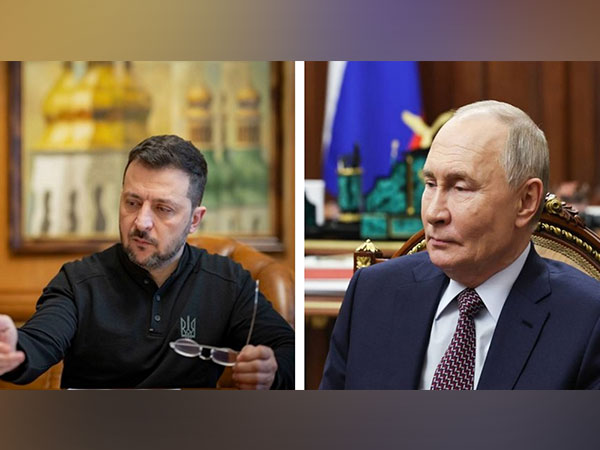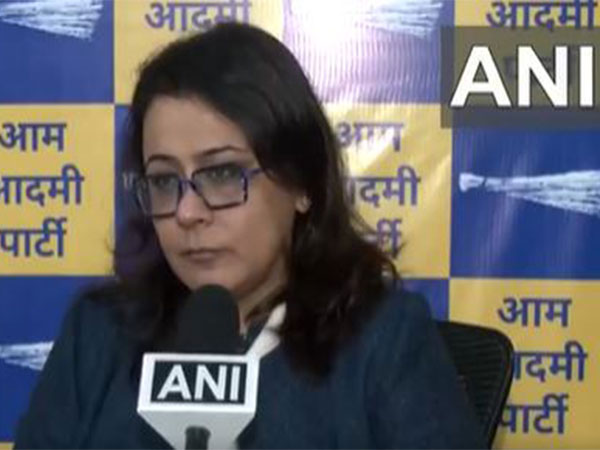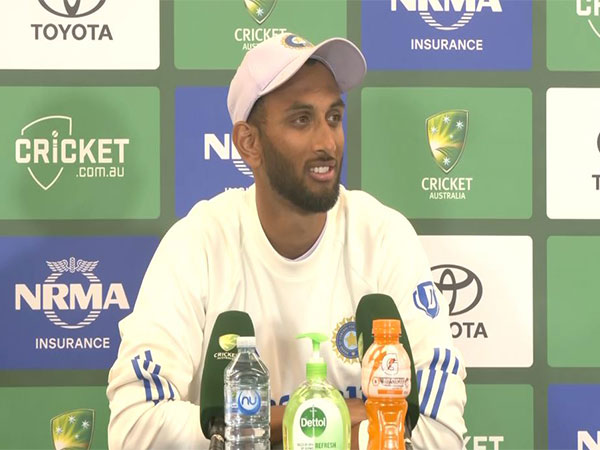Kyiv [Ukraine], January 1 (ANI): Russia-Ukraine conflict: With three years into war, end in sight?
How did the war erupt?
According to Ukraine, the seeds of the conflict were sown with Russia’s annexation of Georgia in 2008 and of Crimea in 2014. The intensifying Russian aggression led to Ukraine getting closer to the Western bloc and demanding membership of the European Union and North Atlantic Treaty Organisation.
In March 2014, Russian forces seized control of Crimea. Putin justified this move by claiming the need to safeguard the rights of Russian citizens and Russian speakers in Crimea and southeastern Ukraine. Following a local referendum in which Crimeans voted to join Russia, the peninsula was formally annexed by Russia.
Ukraine’s demand for NATO membership became a point of huge contention between Putin and the West. While the West backed Ukraine calling it its ‘sovereign right’, Russia called it a ‘security threat’ and warned to invade Kyiv, if it persists with the demand.
In late February 2022, the United States issued a warning about Russia’s plans to invade Ukraine, pointing to the increasing military buildup along the Russia-Ukraine border. As reported by Al Jazeera on February 20, 2022, Russia decided to extend military exercises in Belarus. This move raised concerns for US Secretary of State Antony Blinken, who expressed heightened fears of an impending Russian invasion of Ukraine.
On the night of 23 to 24 February 2022, Russia launched a military offensive in Ukraine. Putin Putin declared the start of a full-scale invasion of Ukraine, involving land, sea, and air attacks targeting Ukrainian military sites and cities nationwide. Putin justified his “special military operation” in order to “demilitarize and denazify Ukraine,” which he claimed was committing genocide against the Russian-speaking population in the Donetsk and Luhansk regions of eastern Ukraine.
Following the invasion, the Ukrainian authorities declared a nationwide state of emergency and announced other related defence and security measures, including the mobilization of reservists.
Major events that happened in Russia-Ukraine war in 2024February: In a major shake-up of the Ukrainian military, President Volodymyr Zelenskyy on February 8 removed his top general, Valerii Zaluzhnyi. In a post on Facebook, Ukrainian Defence Minister Rustem Umerovwrote, “Today, a decision was made to change the leadership of the Armed Forces of Ukraine. War does not remain the same. War changes and requires changes.”
August: Ukrainian forces in early August launched a surprising incursion into Russia’s Kursk region near the border – reportedly the largest foreign attack on Russia since World War II. Russia Chief of the General Staff Valery Gerasimov reported that at 5:30 am on August 6, units of the Ukrainian armed forces numbering up to 1000 people went on the offensive to capture a section of territory in the Sudzhansky district of the Kursk region.
In July, PM Modi visited Russia, which marked his first bilateral visit after resuming office for the third time to participate in the 22nd Russia-India summit. PM Modi was also conferred with Russia’s highest national award “The Order of St. Andrew the Apostle” for his contribution to fostering India-Russia ties. Putin and PM Modi remain in regular contact, holding talks over phone-call once every couple of months, according to the Russian Embassy in India. The two leaders also hold in-person meetings.
On August 23, Prime Minister Narendra Modi undertook a visit to Ukraine at the invitation of President Zelenskyy. This was the first-ever visit by an Indian Prime Minister to Ukraine since diplomatic relations were established between the two countries in the year 1992. During his meeting with Zelenskyy, PM Modi reiterated the need for sincere and practical engagement between all stakeholders to develop innovative solutions to contribute towards the early restoration of peace. He reiterated India’s willingness to contribute in all possible ways to facilitate an early return of peace.
In October, PM Modi again visited Russia’s Kazan for a two-day visit to attend the BRICS Summit. India has throughout reiterated that the solution to the long-standing conflict can only be found through dialogue and diplomacy, and not on the battlefield.
September: CNN on September 12 reported that Russia launched a counter-attack in the Kursk border region. During a press conference, Zelenskyy said, “The Russians have started counteroffensive actions.” In a statement, the Russian Ministry of Defence said that Russian forces had “penetrated” into the Kursk region, capturing 10 settlements.
November: The United States on November 4 confirmed the presence of 10,000 North Korean troops in Russia’s Kursk Oblast, with the Pentagon press secretary saying if they enter combat, they are “legitimate targets” for Ukrainian soldiers. Air Force Maj. Gen. Pat Ryder also said officials estimate the presence of 11,000 to 12,000 North Korean troops in Russia.
Reports showed North Korean troops entering Russia in October and getting trained by the Russian troops in infantry tactics, operating with unmanned aerial vehicles, artillery tactics, trench-clearing and the like. The country also provided the North Korean troops with Russian uniforms and equipment.
US President Joe Biden in November also authorised the use of long-range missiles by Ukraine to target the deepest part of Russia. The move by Biden came as Donald Trump secured victory in the US Presidential elections on November 5 and is set to assume charge in January 2025. Biden’s decision also came in response to Russia’s decision to bring North Korean troops into the fight against Ukraine.
On November 19, 1000 days passed since Russia launched its full-scale invasion of Ukraine. Marking the 1000 days, speakers in the UN Security Council discussed how best to achieve peace in Ukraine. The UN also urged the international community to continue showing solidarity with Ukraine.
The UN also provided statistics on the impact of the war on the people of Ukraine.
UN Resident and Humanitarian Coordinator in Ukraine Matthias Schmale said that over 39,000 civilians have been killed or injured; more than 3,400 schools and hospitals have been damaged or destroyed; and 10 million people have fled their homes.
Schmale also said that since February 2024, civilian infrastructure has been decimated with over 2,000 attacks now on healthcare facilities, 2 million damaged homes, and 65 per cent of Ukraine’s own energy production capacity has been destroyed
OHCHR verified that at least 12,162 civilians, including 659 children, have been killed since February 24, 2022, while at least 26,919 have been injured.
Amy Pope, Director General of the UN migration agency, IOM said that 1,000 days of war have left more than 14.6 million Ukrainians in urgent need of humanitarian assistance, including 3.5 million displaced within the country.
According to the European Union, since February 2022, there have been 38 double-tap strikes at sites where first responders from the State Emergency Service of Ukraine have carried out their duties, resulting in 110 injuries and 34 deaths of rescue workers.
As per the European Union, it is estimated that 5 million people in 2025 will face food insecurity in Ukraine, down from 11.1 million in 2023 and 7.3 million in 2024. Yet, the humanitarian situation on the ground remains critical, with conditions worsening in frontline regions and the harsh winter approaching
.In 2024, the UN estimated that 14.6 million Ukrainians, almost 40% of the country’s population, will need humanitarian assistance. In 2025, millions of Ukrainians will continue to be dependent on humanitarian aid. The needs range from across all sectors, like access to water and hygiene, health care, shelter, psychosocial support, and more.
Experts estimate that this year’s attacks on energy facilities in the country have resulted in the loss of some 9 gigawatts of production capacity – half of what Ukraine needs to get through the winter.
Effect of global political developments on Russia-Ukraine conflict
Donald Trump as new US President: US President-elect Donald Trump has been a strong critic of US’ military aid to Ukraine. During the campaign, he even took a jibe at Ukrainian President Volodymyr Zelenskyy calling him the “best salesman.” He has even vowed to end the war within days of taking over the White House.
According to an analysis by the Carnegie Endowment for International Peace, many expect that Donald Trump’s victory will lead to a resumption of high-level contacts between Washington and Moscow, a reduction in the US aid for Ukraine, and disagreement in NATO.
“However, this does not add up to victory for the Kremlin. The problem is that no Western leader–including Trump–has a plan for ending the war that would be remotely acceptable to Putin…,” according to Carnegie Endowment. Following the win of Trump, Putin’s spokesman Dmitry Peskov said that Russian officials will be watching the actions of the president-elect closely.
Response of global organisations:
NATO has condemned in the strongest possible terms Russia’s “brutal and unprovoked war of aggression” against Ukraine – which is an independent, peaceful and democratic country and a close NATO partner.
The EU and its member states also stand united in their support for Ukraine and its people and firmly condemn Russia’s military aggression. In the latest actions against Ukraine, the EU on December 16 adopted the 15th package of sanctions against Russia to weaken Russia’s military and industrial complex. The EU also sanctioned 54 individuals and 30 entities responsible for actions undermining or threatening the territorial integrity, sovereignty and independence of Ukraine.
Military and humanitarian aid: As per the Kiel Institute for the World Economy, a research institute in Germany for globalization issues, since the beginning of the war in February 2022, 41 countries, specifically the EU member states, other members of the G7, as well as Australia, South Korea, Turkiye, Norway, New Zealand, Switzerland, China, Taiwan, India, and Iceland, have provided military, financial and humanitarian support to Ukraine. International organisations like the United Nations have also supported Ukraine.
Aid to Ukraine was boosted by EUR70 billion in new commitments in September and October. That is mainly a result of European donor agreements to utilise profits from frozen Russian assets for financing budgetary aid.
Way forward
According to reports, Russia currently holds nearly 18-20 per cent of Ukrainian land, particularly in the regions of Donetsk, Luhansk, Zaporizhzhia and Kherson. Though Ukraine made some gains in the Kursk region, the overall impact remains tilted in Moscow’s favour.
With resources running out, fatigue setting in, and Trump about to take over the White House, a settlement to the conflict seems impending, which has resulted in more desperate and aggressive attacks from both sides.
The way forward in the Russia-Ukraine war remains uncertain and depends on several factors, including military developments, diplomatic efforts, and global political dynamics.
Earlier this month, Putin, while speaking at his annual end-of-the-year news conference, had said that he was ready to discuss the possibility of reaching a compromise in talks with US President-elect Donald Trump on the issue of Ukraine. “I don’t know when I’m going to see him. He isn’t saying anything about it. I haven’t talked to him in more than four years. I am ready for it, of course. Any time,” Al Jazeera quoted Putin as saying.
While a peaceful solution will be the best outcome, it will require compromises from both sides, as well as strong international involvement. Several big powers have put expectations on India to play a role in resolving the conflict, and Prime Minister Modi is one of the few global leaders to have visited both Kyiv and Moscow since the conflict began. It remains to be seen what role India and other big powers play, as Trump — who has vowed to end the war — takes oath, and if any settlement is reached, what conditions will it carry. (ANI)
Disclaimer: This story is auto-generated from a syndicated feed of ANI; only the image & headline may have been reworked by News Services Division of World News Network Inc Ltd and Palghar News and Pune News and World News
HINDI, MARATHI, GUJARATI, TAMIL, TELUGU, BENGALI, KANNADA, ORIYA, PUNJABI, URDU, MALAYALAM
For more details and packages
















